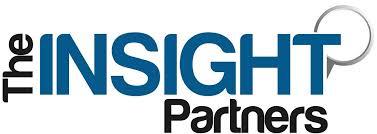Introduction
The Bisoprolol Market is expanding steadily as the global burden of cardiovascular diseases continues to rise. Bisoprolol, a beta-blocker widely used to manage hypertension, chronic heart failure, angina, and arrhythmias, has become a mainstay in modern cardiac care. With aging populations, improved access to primary healthcare, and growing awareness of heart health, demand for bisoprolol-based therapies is increasing worldwide. The market reflects a balance between affordability, accessibility, and formulation innovation, making it one of the most stable therapeutic segments in cardiovascular medicine.
Bisoprolol Market Dynamics
The market’s momentum is driven by a combination of public health priorities and pharmaceutical advancements. As hypertension and heart failure remain among the most prevalent chronic diseases globally, long-term demand for beta-blockers continues to grow. At the same time, expanding generic availability has made bisoprolol more affordable and accessible across regions. Pharmaceutical manufacturers are focusing on product quality, formulation stability, and patient adherence, ensuring consistent supply and competitive differentiation. While developed markets show steady consumption, emerging economies are registering the highest growth rates due to rising diagnosis rates and improved healthcare infrastructure.
Get Sample PDF: - https://www.theinsightpartners.com/sample/TIPRE00018315
Bisoprolol Market Growth Drivers
- Rising Incidence of Cardiovascular Diseases
Increasing lifestyle-related disorders, such as obesity and diabetes, are leading to higher rates of hypertension and heart failure, directly driving bisoprolol demand. - Aging Population
A growing elderly population with multiple comorbidities relies on long-term beta-blocker therapy for cardiac management and prevention of complications. - Expansion of Generic and Cost-Effective Drugs
The expiration of major patents has opened the market to a broad range of generic manufacturers, enhancing affordability and treatment accessibility. - Improved Healthcare Infrastructure
Expanding healthcare systems, insurance coverage, and public health programs are improving drug penetration in developing regions. - Technological Advancements in Formulation
Extended-release tablets and fixed-dose combinations are being developed to improve treatment adherence and patient convenience.
Bisoprolol Market Challenges & Restraints
- Pricing Pressure from Generics
The widespread availability of generics leads to intense price competition, reducing margins for manufacturers. - Stringent Regulatory Requirements
Compliance with international quality standards and pharmacovigilance adds to production costs and time-to-market challenges. - Alternative Therapeutic Options
Emerging classes of antihypertensive drugs, including calcium channel blockers and ARBs, create competitive pressure on beta-blocker usage. - Market Fragmentation
A highly fragmented landscape of producers and distributors can lead to oversupply, uneven quality, and brand differentiation challenges.
Application & Demographic Trends
The bisoprolol market serves a wide range of patient segments.
- Hypertension: The largest application area, supported by long-term prescription demand.
- Chronic Heart Failure: Bisoprolol’s proven efficacy in improving heart function ensures its continued clinical importance.
- Angina and Arrhythmia: Regular use in secondary prevention of ischemic conditions adds to overall market volume.
- Geriatric Population: Older adults represent a growing share of total prescriptions, given the higher prevalence of cardiovascular risk factors.
Distribution channels include hospital pharmacies, retail outlets, and increasingly, online and mail-order pharmacies offering convenient refill models for chronic patients.
Bisoprolol Market Innovations & Trends
- Fixed-Dose Combination Therapies
The integration of bisoprolol with other antihypertensives in single-dose formulations improves adherence and treatment outcomes. - Extended-Release Formulations
Modified-release technology ensures steady drug levels, fewer side effects, and greater patient comfort. - Digital Health Integration
Telemedicine and electronic prescription systems are making chronic disease management easier, indirectly supporting steady bisoprolol consumption. - Sustainable Manufacturing
Pharmaceutical producers are adopting greener production processes, reducing environmental impact while maintaining quality. - Focus on Supply Chain Reliability
Regional manufacturing hubs and API security initiatives are helping stabilize global supply, particularly in developing markets.
Bisoprolol Market Opportunities for Future Growth
- Expansion in Emerging Markets
Rapid urbanization, improved healthcare access, and government-led heart health programs in Asia-Pacific, Latin America, and Africa will sustain future demand. - Lifecycle Management & Product Differentiation
Developing new dosage forms, packaging innovations, and adherence-support programs can enhance brand longevity even in a generic environment. - Institutional and Public Health Procurement
Supplying large-scale public sector and hospital contracts presents stable, long-term growth opportunities. - API and Contract Manufacturing Growth
Demand for high-quality active pharmaceutical ingredients (APIs) offers manufacturers opportunities in global supply partnerships. - Personalized Therapy Potential
As precision medicine evolves, dose adjustments and tailored formulations could become part of future treatment models.
Conclusion
The Bisoprolol Market stands as a strong, resilient segment within cardiovascular therapeutics. Continuous innovation in formulation, growing generic penetration, and expanding healthcare access are supporting sustained global demand. As the prevalence of heart disease rises and healthcare systems focus on preventive management, bisoprolol’s role as a cost-effective and reliable treatment option remains secure. The future of this market lies in balancing affordability, innovation, and accessibility — ensuring that life-saving cardiac care reaches every patient segment worldwide.
Frequently Asked Questions (FAQs)
Q1: What is Bisoprolol used for?
A: Bisoprolol is prescribed to manage high blood pressure, chronic heart failure, angina, and certain heart rhythm disorders.
Q2: What factors are driving market growth?
A: Rising cardiovascular disease rates, aging populations, affordable generic availability, and improved healthcare access are key growth drivers.
Q3: What are the major challenges in the Bisoprolol Market?
A: Intense price competition, strict regulations, and competition from newer drug classes pose key challenges.
Q4: Which regions are experiencing the fastest growth?
A: Asia-Pacific, Latin America, and parts of Africa are expanding rapidly due to increased healthcare investments and better access to medications.
Q5: What future trends will shape the market?
A: Extended-release formulations, fixed-dose combinations, and digital adherence tools will define the next phase of market development.



